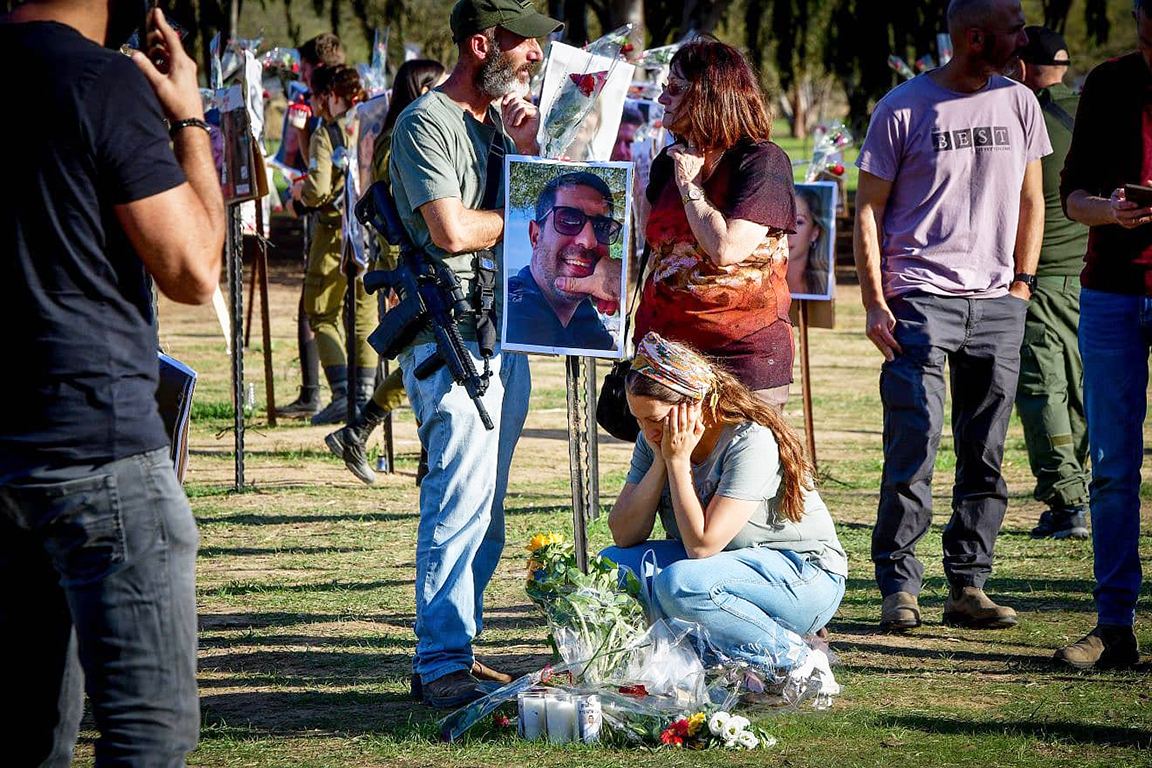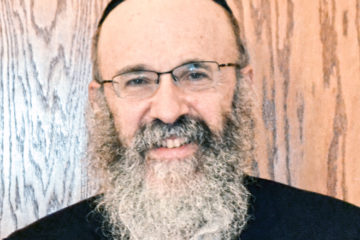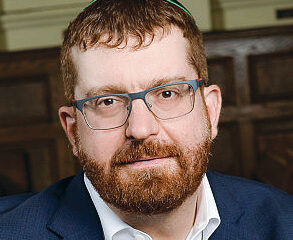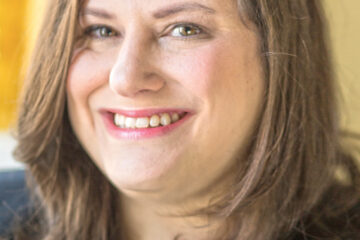Are we cleared yet to gather & memorialize Oct. 7?

By Rabbi Aubrey L. Glazer, Beth Abraham Synagogue
Why do we gather? As a tribal and global community, Jews know that gatherings play a huge role in our lives. In this process of our comings together of friends, family, and co-workers, Priya Parker teaches that we all have the potential to change the way we connect, the way we understand ourselves and one another, and the way we live.
Yet, too often, the human connection at the center of it all — the real magic behind the gathering — is obscured or the deeper purpose occluded. Gathering is intended to help everyone create meaningful, memorable experiences, for work and for play, and especially for religion and spirituality.
As we approach the anniversary of the Oct. 7 massacre, one key question we must ask is why do we gather and how do we begin to heal from this horrific year of mourning?
Whether the memorialization for the massacre takes place on the Gregorian or Hebrew calendar, by the time you read this, there will have been dozens of collections of Hebrew poetry anthologized and published in Israel commemorating all the hundreds of poems that have been written from last Oct. 7 to this one, according to my teacher, Rachel Korazim.
But why? A deeply human need to express our mourning, confront the darkness, heal the deep wounds, and eventually transform this darkness into light. We need a way to gather and ritualize this shattering moment to mourn, heal, and integrate the darkness into light, and bring forward a new hope amidst this year of edging on hopelessness.
As I have argued elsewhere, the Hebrew poets are the prophets whose words affect Jewish thinking and living. So let us listen closely to the words of one renowned Hebrew poet, who offered this advice as we move from mourning to memorializing amidst the war in the Land of Israel:
It is not only permitted for a poet to write a love poem in times of war, but a necessity, because even in times of war the value of love is greater than the value of (death).
It is not only a right for a poet in the days of horror to sing his song to nature, to the blooming trees, to children who know how to laugh, but a duty, the duty to remind a human that s/he is still a human being, that there exists in the world those simple and eternal values that make life more precious…because as long as poetry loves humanity in this (holy) land and the life in it, it is worthwhile and proper for a human, for God, to love them, appreciate them, guard them…
Now these are the words — not of Moses our Teacher — but of another equally great Hebrew poet, Leah Goldberg, and she wrote them in 1939. Goldberg responded to the events of the Shoah/World War II in her Hebrew poetry from the 1940s.
But she began writing poetry at 12, exiled from Russia to Lithuania and eventually immigrated by making aliyah to Eretz Yisrael in 1935.
She wrote many poems during the rise of violence in Europe at the close of the 1930s, in the turbulent days before the outbreak of World War II, the dark cloud of the Shoah beginning.
And that is precisely the controversy about war poetry that arose amongst the greatest Hebrew poets in Israel. So if such a renowned Hebrew poet as Leah Goldberg struggled with writing poetry in a time of war, then all lovers of Zion — whether the greatest Hebrew poets or people like us — struggle with suffering and how it tears our hearts.
How do we memorialize our loved ones and remember love amidst war and destruction?
Recall how the word on the street in Israel post-Oct. 7 was simply, “there are no words” and yet we still seek healing through words. As a way of reflecting again upon this looming question of such a darkened October as to why we gather, I reflect upon one contemporary Hebrew poem written in response to the Oct. 7 massacre by Dael Rodrigues Garcia.
This Hebrew poet was born and raised in Jerusalem, has studied in several seminaries, and earned his master’s in Hebrew literature from Ben-Gurion University of the Negev. Dael is married to Ali, and a father to Roni, and teaches creative writing. Dael has been awarded the Ofira Ben-Aryeh and the Sapir College Prizes.
Garcia’s poem, Hutar Lefirsum, Cleared for Publication, calls us to listen and reflect as we gather to remember.
Cleared for publication:
that our hearts are broken.
And within those hidden places
in empty rooms
thousands of sobs
strangulating without a voice.
Cleared for publication:
that open season was declared upon us.
And we were pillaged in the dark
of the most utterly precious.
Already it cleared for publication:
that magical aura illuminating
those faces of all our beloved ones, extinguished.
Yet, beneath the very same earth
already there is a stubborn plant sprouting
enrooting endlessly
and entwined with love.
A few elucidations are in order to grasp the power of this poem and how it both captures our feelings and affects our thinking when we gather.
If you have ever been blessed to live in Israel, then you know that when they hear television and radio announcers reading the names of the soldiers killed on a given day, it is always prefaced by the very title of this poem. Once these names “are cleared for publication,” then the families already sense the looming catastrophe about to unfold in their lives.
The poet is playful here, as the Hebrew word hutar refers as well to it being “open season” as a double entendre playing on “cleared”— utterly horrifying.
Even more disorienting are those “hidden places” that Dael evokes in this poem, harkening back to its roots in a rabbinic attempt to see behind the veil and understand the prophetic verse: “If you do not heed this, my soul will cry in hidden places because of pride. (Jer. 13:17).”

In searching for the meaning of these “hidden places,” the sages of the Talmud discover a radical theological insight — that indeed even God has a hidden chamber to weep over the loss of Israel’s pride snatched from it through catastrophes and then given to other enemy nations “regarded as sheep to be slaughtered (Ps. 44:23).”
Stop to absorb this insight for a moment: What does it mean to gather now in the presence of divine weeping, especially recalling how elsewhere in scripture God is described as “joyful in His palace (I Chron. 16:27)?”
This is a complete paradox. How can God be both joyful and weeping simultaneously?
What the Talmudic debate yields is that the innermost chambers are for hidden weeping, while in the outer chambers, there is no weeping (Babylonian Talmud, Hagigah 5b).
This resolves the paradox, seeing that there is a need for gathering in different spaces to emote differently; if that is how God holds the paradox, does that work for us as mere mortals?
Where does this leave us in terms of remaining hope, and remaining hopelessly hopeful? The poem concludes with a vision of a hopeful new growth:
Yet, beneath the very same earth
already there is a stubborn plant sprouting
enrooting endlessly
and entwined with love.
Everything turns on the unwillingness to give in to despair and plant more seeds of love to be rooted in that same earth that makes us human.
So amidst conflict, catastrophe, death and destruction that has felt like a new normal since Oct. 7, leave it to Israelis to be on the forefront of keeping hope alive.
Despite the darkness of how this poem begins, it ends with hope through love.
I found parallel inspiration from another Israeli, Oded Adomi Leshem, who has been thinking through these very issues for some time and concludes from his extensive research that there are actually bi-dimensional degrees of hope, from wish to expectation.
Leshem wrote this study while the IDF were bombing the Gaza Strip and missiles from the Gaza strip were being fired at Israeli towns already in May 2021.
Like most Israelis, Leshem had 90 seconds to reach the bomb shelter, grab his kids and his laptop to continue writing about hope. As he explores in this remarkable study that emerged under fire, called Hope Amidst Conflict: Philosophical and Psychological Explorations (2024), Leshem’s research into hope is important at this juncture as he includes a novel integration of philosophical and psychological examinations of the concept of hope.
Leshem also introduces what he calls the “Bi-dimensional Model of Hope,” a pioneering conceptualization and operationalization of hope. His results are based on original data collected in the framework of the Hope Map Project, a global study surveying the hopes for peace in conflict zones worldwide.
He echoes Goldberg in asking, “Is it legitimate to talk about hope for peace while people are burying their loved ones? Is hope a thing to be discussed when hope is essentially absent?”
Leshem concludes that cultivating “optimal hope” is neither naive nor delusional — it is not “considered a waste of time or even a dangerous delusion” to be “discussing peace during intractable ethnonational conflicts” — it is what makes us human, what makes us Jews, what makes us Israelis.
Optimal hope always must abide, especially in such dark times. As Leshem teaches: “optimal hope protects from despair, frustration, and anguish when hopes for peace are dashed.”
But wisely, he notes that: “optimal hope does not require promises,” rather it abides due to its adaptability over adversity, flexibility amidst changing circumstances, and sustainability through extended conflicts.
That optimal hope struggles to sprout and take root is an internal motivation rather than an external assessment.
Once each of us has the strength to complete our cycles of mourning and take a breath for healing, we are restitching our torn hearts into the fabric of the One that continues to connect and inspire optimal hope to redeem this broken world.
To read the complete October 2024 Dayton Jewish Observer, click here.





